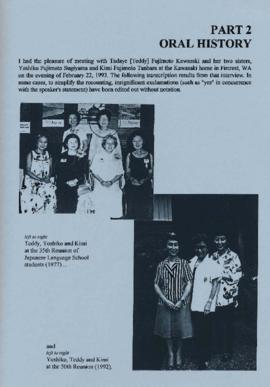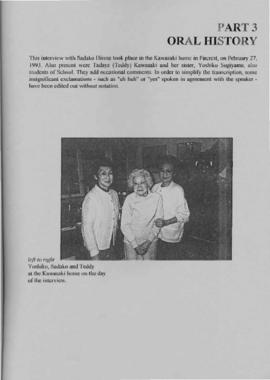Identity elements
Reference code
Name and location of repository
Level of description
File
Title
Tacoma's Nihon Go Gakko, Japanese Language School
Date(s)
- 1993 (Creation)
Extent
Content and structure elements
Scope and content
Oral history interviews with Tadaye Fujimoto Kawasaki, Yoshiko Fujimoto Sugiyama, Kimi Fujimoto Tanbara, and Sadako Hirose by Brenda Sonnier conducted 02/1993. Sisters Tadaye "Teddy" Kawasaki, Yoshiko Sugiyama, Kimi Tanbara, and friend Sadako Hirose recall their school years at Tacomas Nihon Go Gakko (Japanese Language School) and describe life within the citys Japanese-American community during the 1920s, 30s, and 40s. They provide an extensive history of the school building, including its designation as a registration center following Executive Order 9066 and its use as a hostel for Japanese-Americans returning home from internment camps.
System of arrangement
Conditions of access and use elements
Conditions governing access
Technical access
Conditions governing reproduction
Individuals may use project materials for scholarly or research purposes, according to the provisions of fair use, but reproducing, publishing, or broadcasting any oral history project materials requires permission. No use beyond limited quotation for educational and research purposes should be made of these interviews and other materials without obtaining written permission. For more information, contact the University of Washington Tacoma Library.
Languages of the material
Scripts of the material
Language and script notes
Finding aids
Acquisition and appraisal elements
Custodial history
Immediate source of acquisition
Appraisal, destruction and scheduling information
Accruals
Existence and location of originals
This oral history is a part of the University of Washington Tacoma Community History Project. To access additional content related to this interview, see the UWT Digital Collections.


